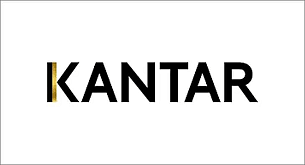Leadership is the problem and the solution: Chris Hirst
At the Pitch CMO Summit - Mumbai 2020, Chris Hirst, Global CEO, Havas Creative, spoke on leadership, organisational culture, cynicism and aligning culture to the purpose of a better bottom line
As advertising and marketing needs expand by the year, an abundance of leadership roles, from SEO specialists to social media moguls, emerge. Anyone can be named as a manager, but what makes a great leader? In a dynamic industry like this, the need for a good leader is imperative. Weighing in on the same at the Pitch CMO Summit - Mumbai2020, Chris Hirst, Global CEO, Havas Creative, shared these insights as he spoke on the topic, 'Ensuring Business Success In A Complex Market – How Leadership Can Redefine The Way We Operate'.
A change agent, Hirst is widely recognized as an innovative and inspirational leader with a proven track record of leading transformation. While studying at Harvard Business School, Hirst developed his now-proven approach to leadership. He believes in the principles of an open culture – where people are given permission to take risks and make mistakes.
“For me, leadership is the problem and the solution,” he remarked. Hirst’s view is that the only way to be agile is to decentralise decision-making. Furthermore, culture is another piece of the leadership puzzle that Hirst unravelled throughout his keynote.
He added that leaders need to create the right culture in order for their teams to outperform. “Culture in an organisation is the behaviour of management/leaders. Culture sets like concrete, you have to take hard physical action to change it,” he asserted. He highlighted the importance for leaders to discuss with their team, their current culture and what kind of culture they want to have.
Apart from organisational culture, Hirst spoke of cynicism and gave some tips to align culture to purpose for a better bottom line. “There has certainly been some cynicism, frankly, around the idea of culture. In some cases, it is possibly considered by leaders to be an afterthought,” he said. “Cynicism is that gap between what you say and what you do. There is a very big gap between what businesses claim are their cultural values, for example, and what the people in the organisation or customers may think. If you do create an environment that allows your team to grow, that gives you a huge competitive advantage in a business context. And this flows to marketing and purpose," he stated.
“If this gap exists between what one organisation may claim is their purpose and the reality within their organisation, then this is a problem with authenticity. It used to be the case you could have a brand that had a certain set of values, and that brand was owned by a company that had a completely different set of values. Brands were considered to be things created and held at arm's length from the company. That is not possible anymore,” Hirst continued. He established a big opportunity for organisations to grow their brands with this, noting consumers are demanding greater authenticity within brands and demanding a sense of purpose. “I think everything is so open and publicly available to scrutiny, it is very difficult to not align brand and culture and be authentic now,” he opened up.
Hirst also advised the need for organisations to be nimble and agile Hirst pronounced the golden rules of leadership. Firstly he remarked,”We need better leaders everywhere. It's difficult but not complicated.” Moreover, he suggested that leaders be honest and ambitious and contended and that to decide is to act, stressing on the importance of clarity in a leader’s persona coupled with ambition. “An effective culture is a superpower,” he said.
Read more news about Marketing News, Advertising News, PR and Corporate Communication News, Digital News, People Movement News
For more updates, be socially connected with us onInstagram, LinkedIn, Twitter, Facebook, Youtube, Whatsapp & Google News
About 60% Instagram influencers in India have fake followers: Report
As per a media report, influencer marketing platform KlugKlug has found that only 2.48 million profiles out of the 8 million have ‘high-quality’ followers
Two of three Instagram influencers in India have more than 60 per cent fake followers, a report by influencer marketing platform KlugKlug shows.
This is particularly true for the beauty and fashion sector, the report noted.
Other countries that have influencers with fake followers are Brazil, the UAE and Indonesia.
As per media reports, such Instagram fake followers can be roped in for as little as Rs 10 to a high of Rs 1,000.
According to Klug Klug India, only 2.48 million profiles out of the 8 million have high-quality followers.
A number of other categories have also been buying fake followers, media reports have noted.
As per a media expert, quoted in the reports, brands are finding it difficult to identify and curb the menace of fake followers and bots.
In a recent setback for influencers the Central Consumer Protection Authority (CCPA) has said those promoting activities like gambling and betting are equally liable as the companies promoting the same.
15% consumers enhance their user experience through virtual assistants: Kantar report
According to Soumya Mohanty, Managing Director & Chief Client Officer- South Asia, Insights Division, Kantar, less than 1% of ads get tested due to lack of time
Marketing data and analytics firm Kantar has unveiled a report that studies the burgeoning AI market to dish out actionable insights for marketers. Within AI, virtual assistants are the fastest growing segment. The report noted that 15% consumers enhanced their ‘user experience through virtual assistants’. This segment is the fastest growing at 27% YoY.
According to the study, while ‘fitness’ and ‘social media’ apps are amongst the leading categories, driving AI adoption (with an average of 2.3 AI led features embedded in these applications), segments like ‘BFSI’, ‘job search’ and ‘short video’ apps are relatively slow in AI adoption, with an average of 1.2 features each. Entertainment apps, digital commerce and pharmacy apps stand somewhere in the middle with 2.0 & 1.8 AI features being adopted, respectively.
Additionally, the report said that while 90% of marketing and sales leaders think their organisations should be using AI “often”, 60% said their organisations “rarely or never” do. Speaking to exchange4media, Soumya Mohanty, Managing Director & Chief Client Officer- South Asia, Insights Division, Kantar highlighted that currently there are a lot of organisations who know that there is something called AI, but haven’t yet figured out how it could help them holistically.
“A lot of the AI just gets used for efficiency purposes, so repetitive tasks get automated,” Mohanty pointed out. Data also plays a big role in why certain organisations are struggling with how to use AI.
For instance, Mohanty explained that in segments like D2C, telecom etc. there is a lot of primary or first-party data. So being able to leverage AI also gets easier. “It's the traditional large sort of FMCG type companies where data sits in silos. You don't really have one single source of data where it's a little difficult to use the full power of AI, because the full power of AI also needs a lot of data sitting in a structure that you can use,” she added.
So, can AI help marketers have a unified view of data? No, says Mohanty. “AI does not help marketers get a unified view of data. Once you have data in a unified way, AI can help you do a lot more with that data.”
According to her, organisations today need to have good, strong data warehousing. “It needs to make sense because a lot of the silos are also because everybody owns one part of it. A lot of people have their own analytics teams internally, so there are a lot of agendas and stakeholders. And then we say data is in silos because fundamentally, when you're doing something internally, different people have different stakes in it,” Mohanty added.
Puneet Avasthi, Senior Executive Director, South Asia, Insights Division, Kantar shared that most organisations are now heavily investing in creating first-party data sets. “Companies that have first party data about their consumers and transactions or interactions that they have with the brand are going to be able to leverage that more effectively to create sharper profiles for the brand as such for the consumer and build relevant recommendations at the right moments.
Panning out she also highlighted how AI can be leveraged to enhance market research and make it more accessible, a part of which Kantar is itself involved in. “A lot of times people say that we can't test an ad because we don't have time. So less than 1% of advertising gets tested and just gets put out. Does it work when it gets put out? It is the question the audience should answer, because so many times, it backfires,” Mohanty shared. Apparently, digital particularly doesn't get tested because organisations just do a/b testing and leave it at that.
Speaking of preferred use cases of AI, Avasthi added that various businesses and brands are looking at creating an experience for the brand that is in line with the brand's architecture and progress across all touch points. “That is something that the AI engines that are working behind can ensure, that all such interactions are consistently delivered across different virtual assistants or chatbots that are available to the consumer,” he said.
The other use case, according to Avasthi, is ensuring that there is greater visibility for the brand in the digital sphere as such, through various recommendation engines, when a certain need is being looked for and to throw up the right kind of information about the brand so that the brand message is amplified in the mind of the consumers.
Among other insights from the Kantar AI report is that 88% consumers used AI based algorithms which analysed their preferences, behaviours, and interests to create personalised recommendations for tailored experiences. This segment grew at 6 % YoY. At 21%, ‘smart home automation’ is a smaller segment but growing at 25% YoY.











 Share
Share
